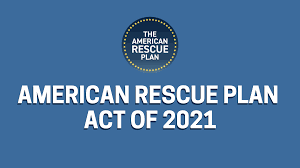Municipal ARP Funds – % for Arts and Culture
American Rescue Plan Act (ARPA) Municipal Aid – Request 1% to Arts & Culture
The American Rescue Plan delivered $350 billion for eligible state, local, territorial, and Tribal governments to respond to the COVID-19 emergency and bring back jobs.
In response to the pandemic’s impact on the arts & cultural sector, in 2021 the Cultural Coalition recommended that every municipality in eastern CT, the 42 towns we serve, dedicate at least 1% of their local ARPA funds to arts & culture.
The Cultural Coalition supports cities & towns interested in committing funds to local arts & culture, and realizes the capacity and expertise needed on issues to do so. We offer technical support, recommendations, and have provided a menu of options to expend local ARPA funds into local communities that will address priority needs and meet the goals of ARPA.
As of Dec. 2023, the Cultural Coalition has helped to steer nearly $2,000,000 in ARPA funds to arts & culture in eastern CT!
STATUS OF MUNICIPAL ARPA ARTS & CULTURE ALLOCATIONS:
_________________________________________________
TOWN OF NORTH STONINGTON – 1% / $15,000 committed to arts & culture
read more…..
Partnering with Cultural Coalition for administration of funds
______________________________________________________
CITY OF NORWICH – 3.5% / $1,000,000 committed to arts & culture
read more…..
Partnering with Cultural Coalition for administration of funds
______________________________________________________
CITY OF NEW LONDON – $630,000 for arts & culture
read more…..
Committed $500,000 for Cultural District Commission
Committed $130,000 for arts & culture
Partnering with Cultural Coalition for administration of $130,000 funds
______________________________________________________
TOWN OF STONINGTON – 1% / $52,000 committed to arts & culture
read more……
Partnering with Cultural Coalition for administration of funds
______________________________________________________
BOROUGH OF STONINGTON –
Provided $60,918 in direct grants to nonprofits, including for six (6) arts & cultural organizations
_______________________________________________________
CITY OF GROTON
Proposed $75,000 to arts & culture
_______________________________________________________
TOWN OF LEDYARD – 1% / $28,399 proposed to arts & culture
_______________________________________________________
TOWN OF LISBON – 1% / $12,489 committed to arts & culture
Provided $12,489 in a one-time donation to Cultural Coalition for regional arts & culture
_______________________________________________________
TOWN OF COVENTRY – 1% / $36, 000 committed to arts & culture
_______________________________________________________
TOWN OF MANSFIELD – 1% / $75,000 committed to arts & culture
MUNICIPAL ARPA ALLOCATION REQUESTS & OPTIONS (from the Cultural Coalition)
Cultural Coalition Letter to Municipal CEOs – ARP – Municipal Leaders – Percent for Art Request
Cultural Coalition Guidance for Municipalities Considering % for Art Request – GUIDANCE ARPA Muni Funds – 1 Percent for Arts and Culture to speed recovery
Cultural Coalition Management Options for Municipal ARP Funds Dedicated to Arts & Culture – Municipal ARP Fund Adminstration Options – Cultural Coalition
MUNICIPAL ARPA GRANT PROGRAMS (Administered by the Cultural Coalition)
Cultural Coalition ARPA Grants for Arts and Culture 2022 – Norwich, New London and Stonington
Now closed
Cultural Coalition ARPA Grants for Arts and Culture 2023 – Norwich Round 2 & IMPACT Grants
Now closed
American Rescue Plan Act (ARPA) Information
The Coronavirus State and Local Fiscal Recovery Funds provide a substantial infusion of resources to help turn the tide on the pandemic, address its economic fallout, and lay the foundation for a strong and equitable recovery.
Use of Funding
• Support public health expenditures, by funding COVID-19 mitigation efforts, medical expenses, behavioral healthcare, and certain public health and safety staff;
• Address negative economic impacts caused by the public health emergency, including economic harms to workers, households, small businesses, impacted industries, and the public sector;
• Replace lost public sector revenue, using this funding to provide government services to the extent of the reduction in revenue experienced due to the pandemic;
• Provide premium pay for essential workers, offering additional support to those who have borne and will bear the greatest health risks because of their service in critical infrastructure sectors; and,
• Invest in water, sewer, and broadband infrastructure, making necessary investments to improve access to clean drinking water, support vital wastewater and stormwater infrastructure, and to expand access to broadband internet.
To help alleviate the economic hardships caused by the pandemic, Coronavirus State and Local Fiscal Recovery Funds enable eligible state, local, territorial, and Tribal governments to provide a wide range of assistance to individuals and households, small businesses, and impacted industries, in addition to enabling governments to rehire public sector staff and rebuild capacity. Among these uses include:
• Delivering assistance to workers and families, including aid to unemployed workers and job training, as well as aid to households facing food, housing, or other financial insecurity. In addition, these funds can support survivor’s benefits for family members of COVID-19 victims.
• Supporting small businesses, helping them to address financial challenges caused by the pandemic and to make investments in COVID-19 prevention and mitigation tactics, as well as to provide technical assistance. To achieve these goals, recipients may employ this funding to execute a broad array of loan, grant, in-kind assistance, and counseling programs to enable small businesses to rebound from the downturn.
• Speeding the recovery of the tourism, travel, and hospitality sectors, supporting industries that were particularly hard-hit by the COVID-19 emergency and are just now beginning to mend. Similarly impacted sectors within a local area are also eligible for support.
• Rebuilding public sector capacity, by rehiring public sector staff and replenishing unemployment insurance (UI) trust funds, in each case up to pre-pandemic levels. Recipients may also use this funding to build their internal capacity to successfully implement economic relief programs, with investments in data analysis, targeted outreach, technology infrastructure, and impact evaluations.
______________________________________________
Data on the Impact of COVID-19 on Arts & Culture in CT
Office of Legislative Research – Impact of COVID-19 on the State’s Leisure and Hospitality Industry (Feb. 2021)
Americans for the Arts – State of CT Report AFTA State_CT Red Alert

